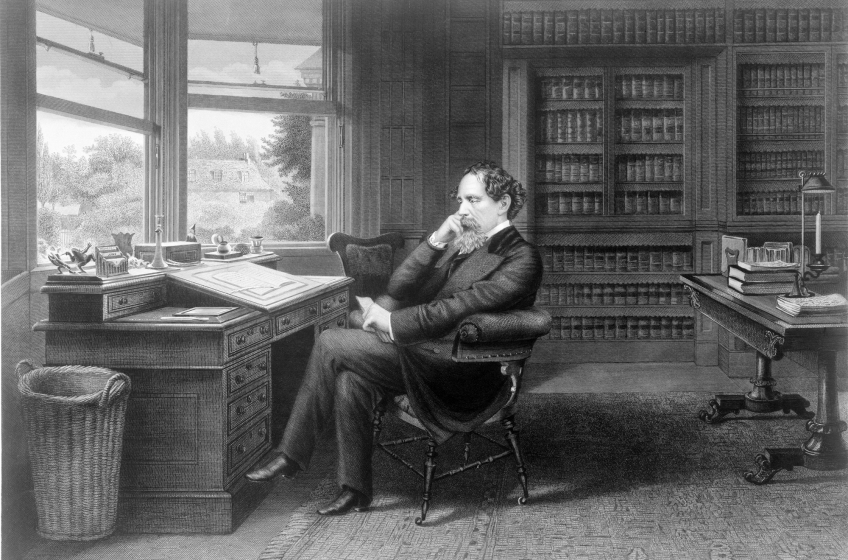Charles Dickens's Life in Kent
a visitor's overview of the famous author's connections with Kent
Charles Dickens, one of the most celebrated authors of the Victorian era, had an enduring connection with the county of Kent in South-East England. This connection was not just symbolic or reflective of a leisurely appreciation for the region, but it was profound, personal, and greatly influenced his work.
Born in Portsmouth in 1812, Dickens moved to Chatham in Kent with his family at the age of four, where he lived until he was ten years old. Although a short span of his life, it was a period that left a lasting imprint on Dickens' psyche. It was a time of relative stability and happiness in his otherwise tumultuous life, as his father, John Dickens, was still solvent and the family could enjoy a moderate level of prosperity.
In Kent, young Charles was exposed to a wide range of experiences. The charming, semi-rural landscape of Kent, its bustling towns, the Medway River, and historic landmarks such as Rochester Cathedral and Castle shaped his imagination. He spent many hours reading and exploring the countryside, absorbing impressions that would later emerge in his works. These early encounters with the landscape and people of Kent sowed the seeds for the evocative social and geographical contexts in his novels.
This happy period was followed by a painful chapter in London, where his father's imprisonment for debt plunged the family into hardship. Yet, Dickens never lost his fondness for Kent. As a grown man, he returned regularly to the region for solace and inspiration.
A landmark connection to Kent is his residence, Gad's Hill Place in Higham, a house Dickens admired as a child and acquired as a successful author in 1856. It was here he spent the last thirteen years of his life, writing novels like "Great Expectations" and "A Tale of Two Cities." The house and its surrounding areas feature in his work, including the eerie opening scene in "Great Expectations," which is believed to be inspired by the lonely churchyards of Cooling in Kent.
Rochester and Chatham, both in Kent, are vividly depicted in several of Dickens' novels. For instance, "The Pickwick Papers" paints a lively picture of the Bull Inn in Rochester. Similarly, Miss Havisham's Satis House in "Great Expectations" is inspired by Restoration House in Rochester.
The Medway towns, where Dickens spent his formative years, are believed to be the blueprint for the fictional city of 'Cloisterham' in his unfinished novel, "The Mystery of Edwin Drood." This shows the profound and long-lasting impression Kent made on Dickens, and how it remained a prominent fixture in his creative psyche until the very end of his life.
In Dickens's writing, Kent serves as more than just a physical location. It is a palette of emotions, memories, and observations about society. Its enchanting landscapes, its disparities of wealth and poverty, its colourful characters - all seep into his writing, imbuing it with a sense of realism, depth, and dynamism.
Dickens also utilized his connection with Kent for social commentary. His knowledge of the stark contrasts between the idyllic countryside and the poor living conditions of the working class, often hidden in plain sight, helped him depict the social realities of Victorian England with acuity and empathy.
The attachment to Kent was so profound that Dickens wished to spend his final days there. He passed away at Gad's Hill Place in 1870, bringing his deep connection with Kent to a poignant conclusion.
In essence, Dickens' connection with Kent is a fascinating study of how a writer's environment can become an integral part of his literary canvas. Dickens immortalized Kent in his works, rendering the landscapes, landmarks, and life of the county with such vivid detail and emotional depth that they continue to live on, more than a century after his death.

